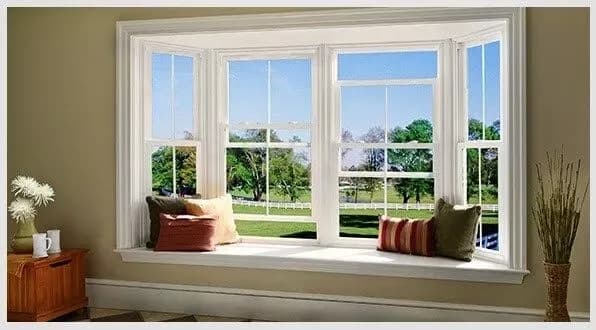5 Unexpected Causes of Foggy Windows in Your Home: A Comprehensive Guide
-1920x1080.png&w=3840&q=75)
Have you ever wondered why your windows fog up, obstructing the view and dampening the mood on a chilly morning? While foggy windows are a common occurrence, especially in certain climates, not all their causes are widely known. This comprehensive guide will unveil five unexpected reasons behind foggy windows in your home and provide you with actionable insights to keep your panes crystal clear.
Cause 1: Inadequate Ventilation

The Role of Ventilation in Preventing Foggy Windows Proper home ventilation is not just a matter of comfort but a crucial factor in maintaining the health and integrity of your living environment. When it comes to preventing foggy windows, the importance of adequate ventilation cannot be overstated. Windows fog up as a result of condensation, which occurs when warm, humid air inside your home comes into contact with the cooler surface of the window glass. This phenomenon is not merely a visual nuisance but can also be indicative of excessive moisture levels in your home, which, over time, could lead to mold growth and structural damage.
The key to preventing window condensation and maintaining clear windows lies in effectively managing indoor humidity levels. This is where proper ventilation plays a pivotal role. Areas of your home such as the kitchen, bathroom, and laundry room are hotspots for humidity generation. Activities like cooking, taking hot showers, and drying clothes indoors release a significant amount of moisture into the air. Without a way for this moist air to escape, it accumulates, leading to increased humidity and, consequently, foggy windows.
Enhancing ventilation in these critical areas can significantly reduce the risk of condensation on your windows. For instance, exhaust fans are invaluable tools in this regard. Installing and regularly using exhaust fans in your kitchen and bathrooms can efficiently remove moist air from these rooms, directing it outside and preventing it from spreading throughout your home. For homes without built-in exhaust fans, opening windows during and after these moisture-generating activities can provide a similar benefit by allowing fresh air to circulate and dilute indoor humidity levels.
Moreover, it's not just about mitigating moisture but also about promoting a continuous flow of air throughout your home. Strategic cross-ventilation, achieved by opening windows on opposite sides of your home, can encourage a natural airflow that sweeps humidity and stale air out, replacing it with fresh, dry air from outside. This method is particularly effective during cooler parts of the day when outdoor air is less humid and can help in maintaining an optimal indoor climate.
However, ventilation is just one piece of the puzzle. Pairing adequate ventilation with other humidity-control strategies, such as using dehumidifiers in particularly damp areas or maintaining indoor plants that absorb humidity, can further enhance your efforts to keep your windows clear and your home comfortable. Additionally, being mindful of how and when you generate moisture—such as covering pots while cooking to minimize steam release or avoiding indoor line drying of laundry—can also make a significant difference in your indoor humidity levels.
In summary, maintaining proper ventilation throughout your home is essential not only for preventing foggy windows but also for ensuring a healthy, comfortable living environment. By taking proactive steps to manage indoor air quality and humidity, you can enjoy clear windows and a fresher home all year round.
Cause 2: Faulty Window Seals

How Faulty Window Seals Lead to Condensation The integrity of window seals is fundamental to the performance and efficiency of your windows, especially in the case of double-glazed units. These seals are designed to create a moisture-free vacuum or gas-filled space between the panes, offering enhanced insulation and reducing heat transfer. However, as windows age, the seals can degrade due to various factors such as extreme weather conditions, direct sunlight, and the natural settling of buildings. This degradation compromises the seal's effectiveness, potentially allowing air and moisture to enter the space between the glass panes.
When the seal on a double-glazed window fails, it disrupts the delicate balance maintained within the sealed unit. Moisture that enters this space can condense on the interior surfaces of the glass when the temperature differential between the inside and outside of the window is significant. This condensation is not only a visual obstruction but also an indicator that the window's thermal efficiency is compromised. In the winter, you may notice that rooms with windows having faulty seals feel cooler, as the windows are no longer able to provide adequate insulation. Similarly, in the summer, these windows might allow excess heat to enter, making spaces uncomfortably warm and increasing energy costs for cooling.
The process of seal deterioration is often gradual and can go unnoticed until fogging becomes apparent or energy bills begin to rise unexpectedly. This makes regular inspection of window seals an essential maintenance task. Checking for signs of wear and tear, such as cracks, gaps, or visible condensation between panes, can help identify seal failures early on. In some cases, early detection and intervention can allow for repairs to be made, such as replacing the sealant or the affected pane of glass, thus restoring the window's insulative properties and preventing further condensation issues.
However, if left unaddressed, faulty seals can lead to more significant problems beyond foggy windows. Persistent moisture can encourage mold growth on or around the window frame, posing health risks and potentially causing damage to the surrounding structure. Additionally, the loss of insulative effectiveness can significantly impact the energy efficiency of your home, leading to higher heating and cooling costs.
Preventive measures, such as applying sealant around window frames or installing weather stripping, can augment the lifespan of window seals. Moreover, when selecting new windows, opting for models with high-quality, durable seals and materials can provide longer-lasting protection against seal failure. For windows already exhibiting signs of seal degradation, consulting with a professional to assess whether repair or replacement is the most cost-effective solution is advisable.
In essence, the maintenance of window seals is not merely about preserving the clarity of your view but also about ensuring the energy efficiency and comfort of your living space. Regularly monitoring and addressing any issues with window seals can save you from future inconvenience, health risks, and unnecessary expenses.
Cause 3: High Indoor Humidity

Indoor Humidity: A Hidden Culprit Behind Foggy Windows Indoor humidity plays a pivotal role in the health and comfort of your home environment. While a certain level of humidity is necessary to prevent dry air and ensure comfort, excessive humidity can lead to a host of problems, including foggy windows. This phenomenon occurs when the moisture-laden air inside your home condenses on the cooler surface of window glass, a process that is not only annoying but can also signal an imbalance in your home's indoor climate.
The sources of excessive indoor humidity are numerous and often related to everyday activities. Cooking, for instance, releases a significant amount of moisture into the air, especially when boiling water or simmering foods. Similarly, taking hot showers without proper ventilation can turn your bathroom into a steam room, with moisture eventually spreading throughout your home. Drying clothes indoors, particularly on radiators or indoor airers, adds to the problem by evaporating moisture into the air. Even breathing and perspiring contribute to indoor humidity levels, with the effect magnified in homes with multiple occupants.
The key to managing indoor humidity and preventing foggy windows lies in controlling these moisture sources. Exhaust fans are invaluable in this endeavor, especially when installed in kitchens and bathrooms. By actively removing moist air at the source, these fans can significantly reduce humidity levels. For homes without built-in ventilation or in climates where opening windows frequently is not feasible, portable dehumidifiers offer an effective solution. These devices work by extracting moisture from the air, storing it in a reservoir, or expelling it outside, thereby maintaining a healthier indoor humidity level.
Ensuring that clothes are dried outside or in well-ventilated areas is another critical step in controlling indoor moisture. Outdoor drying not only minimizes the amount of moisture released into your home but also benefits from the sanitizing effects of sunlight. In situations where outdoor drying is not possible, using a dryer vented to the outside or drying clothes in a well-ventilated room with an open window can mitigate the impact on indoor humidity.
Beyond these immediate solutions, monitoring your home's overall humidity levels can provide insights into when and where moisture control is needed most. Hygrometers, devices that measure humidity, are inexpensive and can be placed in various rooms to track humidity levels. The ideal indoor humidity level is between 30% and 50%, a range that balances comfort with the prevention of moisture-related issues.
Improving your home's insulation and sealing leaks can also reduce the incidence of foggy windows by minimizing the temperature differentials that contribute to condensation. This includes upgrading windows to double-glazing with improved thermal properties, sealing gaps around doors and windows, and adding insulation where necessary.
In conclusion, managing indoor humidity is a multifaceted approach that involves minimizing moisture production, enhancing ventilation, and monitoring humidity levels. By addressing these areas, you can significantly reduce the occurrence of foggy windows, creating a more comfortable, healthy, and enjoyable living environment. Remember, the goal is to strike a balance that supports both your home's structural integrity and the well-being of its inhabitants.
Cause 4: Temperature Fluctuations

Temperature Fluctuations and Their Impact on Your Windows The phenomenon of window fogging is closely tied to the interplay between indoor and outdoor temperatures. Temperature fluctuations, especially those that are sudden or extreme, can significantly affect the propensity for windows to fog up. This is because the surface of the window acts as a canvas where the moisture in the warm air inside your home condenses when it comes into contact with the cooler surface of the glass. The more drastic the temperature differential, the more likely condensation is to occur.
During the transition between seasons, such as from fall to winter or winter to spring, these fluctuations are most pronounced. The external temperature can swing widely within a single day, from chilly mornings to warm afternoons, and back to cold evenings. These swings can cause the interior surface of your windows to cool rapidly, leading to condensation if the indoor air is humid and warm. This not only obstructs your view but can also contribute to a damp environment conducive to mold growth and wood rot around window frames.
To mitigate the effects of temperature fluctuations on window fogging, it is essential to strive for a more consistent indoor temperature. This doesn't mean keeping your heating or cooling on all the time, which would be impractical and costly. Instead, it involves using your home's insulation and heating systems efficiently to reduce the rate at which indoor temperatures change in response to the outside environment. For instance, programmable thermostats can automatically adjust your home's temperature based on the time of day or the outside temperature, helping to maintain a steady climate inside.
Thermal curtains are another effective tool in the battle against window fogging caused by temperature fluctuations. These curtains are designed with insulative properties that help to keep the warmth in during the winter and the heat out during the summer. By drawing thermal curtains over windows, particularly during the night or on extremely hot or cold days, you can create a thermal barrier that reduces the temperature differential between the indoor air and the window surface. This not only helps to prevent condensation but also contributes to energy efficiency by reducing the need for heating and cooling.
Furthermore, installing double-glazed or even triple-glazed windows can provide an additional layer of protection against temperature fluctuations. These windows are constructed with multiple layers of glass separated by air or inert gas, significantly improving their insulative properties. As a result, the interior glass surface is less affected by external temperature changes, reducing the likelihood of condensation forming.
Addressing temperature fluctuations also involves being mindful of activities within the home that can rapidly alter indoor temperatures. For example, cooking, using hot water, or operating appliances that generate heat can quickly increase indoor temperatures. By using exhaust fans, opening windows when appropriate, and avoiding the use of such appliances during peak temperature fluctuation periods, you can help stabilize your indoor climate.
In summary, managing the impact of temperature fluctuations on your windows requires a combination of strategies aimed at stabilizing indoor temperatures, enhancing insulation, and minimizing internal sources of heat. By adopting these measures, you can significantly reduce the occurrence of foggy windows, ensuring clearer views and a more comfortable living environment throughout the year.
Cause 5: Ineffective Window Frames

Why Your Window Frames Matter The choice of window frames in your home is more than just an aesthetic decision; it plays a crucial role in the thermal efficiency, comfort, and even the air quality of your living spaces. Different materials have distinct properties that affect how windows respond to external temperatures and moisture, directly impacting the likelihood of condensation and fogging. Understanding these differences is key to choosing the right window frames that can withstand your local climate while minimizing unwanted condensation.
Metal frames, for instance, are highly conductive, meaning they easily transfer heat and cold. During the winter, metal frames can quickly become cold to the touch as they draw heat out of your home and into the cooler external environment. This rapid temperature decrease can lead to condensation when warm, moist air inside the house comes into contact with the cold surface of the glass near the metal frames. The same principle applies in reverse during hot weather, where the frame can heat up, affecting the indoor temperature and potentially leading to condensation on the exterior of the window glass due to air conditioning inside.
In contrast, materials like wood and vinyl offer better insulative properties. Wood, being a natural insulator, does not conduct heat as readily as metal, helping to maintain a more consistent temperature across the surface of the window. This reduces the risk of condensation forming due to temperature differences. However, wood frames require regular maintenance to protect against moisture, which can cause the wood to warp, rot, or become a breeding ground for mold if not properly treated and sealed.
Vinyl frames, made from PVC (polyvinyl chloride), are designed with insulation in mind. They often contain hollow chambers that trap air, providing an additional layer of insulation. This design helps to minimize heat transfer, keeping the interior glass surface closer to the indoor air temperature and significantly reducing the likelihood of condensation. Vinyl is also low maintenance compared to wood, as it does not rot, warp, or require painting, although it may become discolored or brittle over time due to exposure to sunlight and extreme temperatures.
Fiberglass frames are another excellent option for reducing window condensation. Like vinyl, fiberglass frames have insulative properties that help maintain consistent indoor temperatures. They are also strong, durable, and resistant to weathering and thermal expansion, which can distort frame shape and compromise seal integrity. Fiberglass frames can be more expensive than other options, but their longevity and energy efficiency can make them a cost-effective choice over the long term.
Composite frames, made from a mixture of materials (such as wood fibers and plastic), combine the best properties of their component materials. They offer the insulation and aesthetic appeal of wood with the durability and low maintenance of synthetic materials like vinyl. Composite frames are resistant to moisture and thermal expansion, making them an excellent choice for areas with high humidity or fluctuating temperatures.
Regardless of the material, ensuring that your window frames are well-maintained is crucial for preventing condensation. Over time, frames can develop cracks, gaps, or other forms of damage that compromise their insulative properties and allow moisture to penetrate, exacerbating fogging issues. Regular inspections and prompt repairs or replacements of damaged frames can help maintain their effectiveness in preventing condensation.
In conclusion, the material and condition of your window frames have a significant impact on the thermal efficiency of your windows and the overall comfort of your home. By choosing frames with better insulative properties and committing to regular maintenance, you can reduce the risk of foggy windows, improve your home's energy efficiency, and create a more comfortable living environment for you and your family.
Solutions and Preventative Measures

Preventing Foggy Windows: Effective Solutions and Tips
Foggy windows can be more than just a minor inconvenience; they can signal underlying issues in your home’s ventilation, insulation, or humidity levels. Thankfully, with a proactive approach and the right strategies, you can significantly reduce or even eliminate this common problem. Here are some expanded solutions and preventative measures to keep your windows clear and your home comfortable.
Improve Ventilation
Enhancing the airflow in your home is essential for reducing indoor humidity levels, which in turn minimizes the risk of condensation on your windows. Utilizing exhaust fans is particularly effective in areas where moisture is most often generated, such as kitchens and bathrooms. These fans can quickly expel humid air outside, preventing it from circulating throughout your home. Additionally, opening windows whenever weather permits allows for cross-ventilation, encouraging the exchange of moist indoor air for drier outdoor air. For homes lacking sufficient natural ventilation, consider installing trickle vents or using mechanical ventilation systems to ensure a continuous flow of fresh air.
Seal Gaps
Windows can become less effective over time due to wear and tear, leading to gaps and leaks that allow warm, moist air to escape and condense on cooler window surfaces. Conduct regular inspections of your window frames and seals, looking for signs of damage or deterioration. Caulking and weather-stripping are inexpensive and effective ways to seal these leaks, improving your windows' insulation and reducing the likelihood of fogging. Pay special attention to older windows, as they are more prone to developing gaps that can contribute to condensation issues.
Control Humidity
Managing the humidity levels inside your home is critical for preventing window condensation. Dehumidifiers are excellent tools for removing excess moisture from the air, especially in naturally damp areas like basements or during humid seasons. Additionally, consider venting moisture-generating activities, such as drying clothes or cooking, directly outdoors when possible. Simple changes in daily routines, like covering pots while cooking to minimize steam release or using vented dryers for laundry, can also have a significant impact on reducing indoor humidity.
Maintain a Consistent Temperature
Fluctuations in indoor temperature can exacerbate window fogging by increasing the temperature differential between the inside and outside of your windows. To avoid this, aim to maintain a consistent indoor temperature, particularly during the colder months. Programmable thermostats can automate this process, gradually adjusting the temperature based on your daily schedule or the time of day, thereby reducing the risk of sudden temperature drops that can lead to condensation.
Upgrade Your Windows
If your windows are old or inefficient, they may be contributing to your condensation problems. Upgrading to double-glazed or triple-glazed windows can significantly improve your home’s insulation and reduce the likelihood of fogging. These windows are designed with two or three layers of glass and an insulating gas fill, which helps to maintain a consistent temperature on the interior glass surface. Additionally, frames made from non-conductive materials such as vinyl, wood, or fiberglass offer superior insulation compared to traditional metal frames, further reducing the chances of condensation.
Additional Measures
- Use Window Insulation Kits: For an economical solution, consider applying plastic film insulation kits to your windows during the winter months. These kits can temporarily improve the insulative properties of your windows, reducing heat loss and preventing condensation.
- Install Interior Storm Windows: Interior storm windows can be added to existing windows to create an additional layer of insulation, helping to keep the interior glass warmer and reduce fogging.
- Circulate Air: Use ceiling fans in reverse (clockwise) during colder months to circulate warm air that rises to the ceiling back down into the room, which can help even out the temperature throughout the space.
Implementing these solutions and preventative measures can help you maintain clearer windows and a more comfortable living environment. Regular maintenance and mindful practices are key to preventing foggy windows.
Conclusion
While foggy windows can indeed be a significant annoyance, they also present an opportunity to delve deeper into the health and efficiency of your home's environment. By understanding and addressing the underlying causes, such as inadequate ventilation or outdated window frames, you can not only clear up your views but also significantly enhance the comfort and livability of your living spaces. Implementing solutions like improving air circulation, sealing gaps, and controlling indoor humidity levels can transform your home into a more pleasant, energy-efficient space.
However, it's important to recognize when simple DIY fixes are insufficient for the challenges at hand. Persistent foggy windows, despite your best efforts to mitigate them, could signal more complex issues that require professional intervention. This is particularly true in older homes where windows may have outlived their functional lifespan, contributing to energy loss and reduced comfort.
This is where Aspen Home Improvements can step in. Our expertise lies in providing tailored solutions that address not just the symptom of foggy windows but the root causes affecting your home's thermal performance. We offer an array of high-quality, energy-efficient window options that not only aim to resolve fogging issues but also enhance your home's aesthetic appeal and functional needs. Whether you're looking for advanced insulation options or stylish designs that complement your home's architecture, our team is equipped to guide you through the selection process, ensuring you make the best investment for your specific circumstances.
For those who are navigating the complexities of home improvement and seeking to improve their home's energy efficiency and appearance, we understand that the path forward may seem daunting. That's why we're here to offer expert advice, comprehensive support, and competitive pricing to make the process as smooth and straightforward as possible. If you're contemplating window replacement or require professional insight into addressing foggy windows, don't hesitate to reach out to Aspen Home Improvements. Together, we can embark on a journey to clear up those views and transform your home into the sanctuary you deserve. Let's tackle this challenge together and unveil the clear, comfortable, and beautiful home environment you aspire to achieve.
Related Posts:
What’s a home without windows, or with old worn-out windows? Windows let the beautiful natural sunlight in while protecting us from the elements outdoors...
Regardless of how hardy the window materials are, windows eventually wear out...
Replacing your windows for reasons such as window damages, security breaches, or changing window frames is a common thing...
As a homeowner, you may want to know why you need to invest in energy-efficient windows...
Get A Free Estimate Now!
Special Financing Available
Ready to Start Your Project?
Give Us a Call for a Free Consultation.
What Homeowners Say About Aspen
Very good working with this company. Product is good. Like family owned business… very friendly! Purchased a new sliding door and window.
Wonderful people to work with! In order to replace the door, they had to remove the original woodwork, but once it was in they put it back up so well that we can't see a difference. Everyone was great. The salesman, the technician that did the work and the person that did the follow up. I wouldn't hesitate to recommend them to anyone!
The experience was awesome. Luke, our sales person, was amazing, friendly and knowledgeable and willing to get the answers we needed. The install was easy. They communicated throughout the process. I would recommend Aspen to anyone.
Great window quality. Customer service has been good with taking care of a few minor issues. Nice little gift box when they come for a final review.
Very grateful that this company would tackle the siding on our vintage log cabin. The crew that did the work had weather challenges with several snow events, but the work is well done and we've had compliments as to how Nice our house looks. Thank you Aspen!
Aspen Recently Replaced Our Windows On Our 50 Year Old Home And They Turned Out Beautifully. Thank You Aspen
Friendly and hardworking installers. Very happy and would love to have Aspen come back to do more home projects.
Highly recommend Aspen! We had all 25 windows replaced from white to black and they turned out better than we imagined. Our house looks like a storybook house now. The new windows were the final touch on our total home renovation. Aspen did a phenomenal job!!
Excellent job. Excellent customer service. Would have to recommend for all situations. These guys rock!
Pleasant team from front to back, very professional, great products and timely installation. Special thanks to Breeze, Lisa, Wesley, Mike and Madison!
The Aspen team is responsive, quick, and professional. They set realistic timelines, expectations, and delivered on them. The quality and warranty are second to none.
Very professional company, with great workmanship ! Very responsive and competitive cost. Highly recommend their service!! Oh, they brought donuts and coffee! It was a great experience all around!
-544x459.png&w=3840&q=75)
-640x390.png&w=3840&q=75)

Aspen Home Improvements

Mon-Fri: 9AM-5PM
Sat: 9AM-1PM

